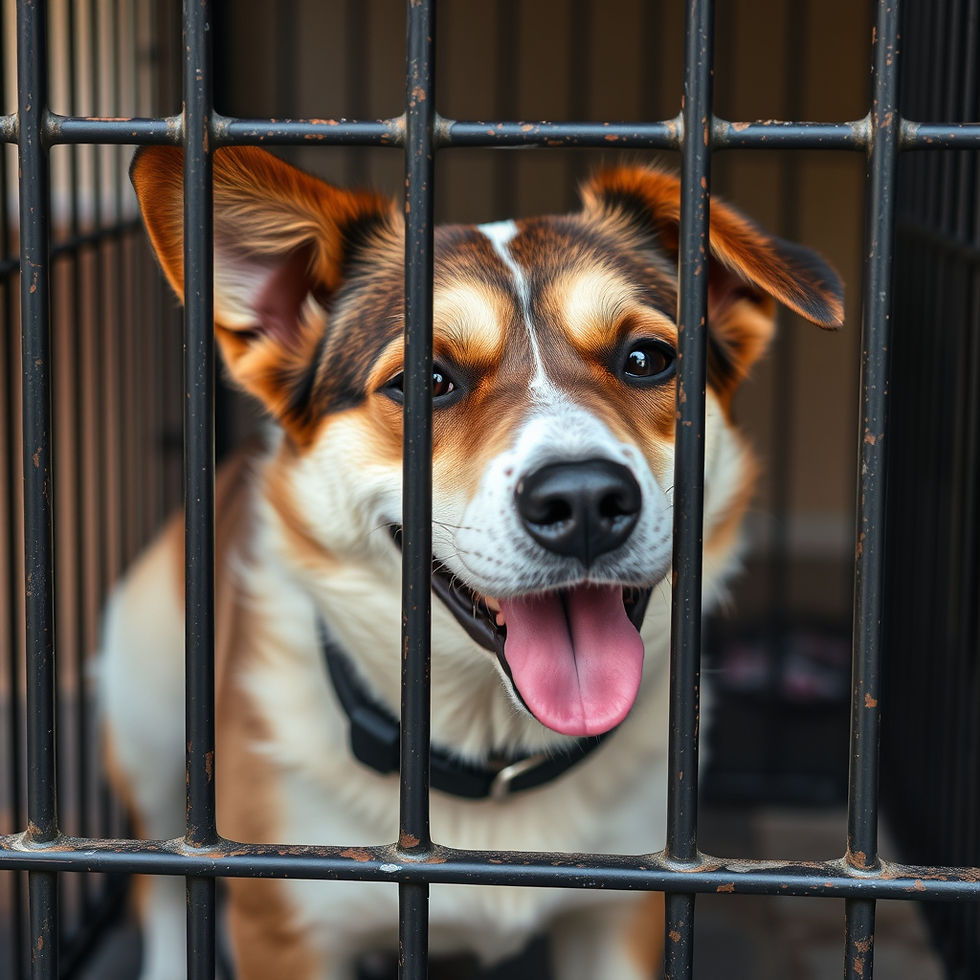Why Crate Training Isn’t Cruel: It’s Actually One of the Kindest Things You Can Do for Your Dog
- Alyssa

- Jul 20
- 3 min read

You’ve probably heard mixed reviews about crate training. Some say it’s essential. Others act like it’s a medieval torture device. Here at Tri-Dog Solutions, we’re big believers in cutting through the noise (and the guilt) to get to what really helps your dog feel safe, supported, and understood.
So let’s talk about it: crate training. Why it matters, how to do it right, and how it builds a solid foundation for your dog’s emotional and behavioral well-being.
First Off: What Is Crate Training for your dog, Really?
Crate training is the process of teaching your dog to see their crate as a safe, cozy den — not a punishment, not a time-out zone, and definitely not doggy jail. Think of it more like their own personal Airbnb that no one else is allowed to rate.
It’s not about “locking them up.” It’s about creating a secure space that supports everything from house training to anxiety reduction and even faster recovery after surgery. Bonus: it also helps your dog learn to settle when you’re not around, or when you just need five minutes without being followed to the bathroom.
Why Crate Training Is An Important Part of Dog Training
✅ Safety First
Whether you’ve got a curious puppy, a rescue who’s new to your home, or a dog with a PhD in mischief-making, the crate helps prevent dangerous situations when you can’t supervise. Electrical cords, garbage snacks, swallowing socks? Hard pass.
✅ Helps with House Training
Dogs instinctively avoid soiling where they sleep. A properly sized crate helps teach bladder control and sets you both up for success with fewer messes and less frustration.
✅ Reduces Anxiety and Overstimulation
Crates offer a quiet place to decompress. This is especially helpful for dogs who struggle with reactivity, noise sensitivity, or overexcitement. We’re not saying your dog needs a man cave, but… they might.
✅ Prepares Your Dog for Real Life
Vet visits, grooming appointments, travel, boarding, these situations often require your dog to be crated or kenneled. If they’ve never been introduced to it in a positive, gradual way, it can be scary and stressful. Crate training now = less stress later.
What Crate Training Isn’t
Let’s clear something up: crate training isn’t a shortcut to good behavior, and it’s definitely not a replacement for training, structure, or building a strong relationship with your dog.
A crate is just a tool. The magic comes from how you use it.

Crate Training: A Boundary with a Side of Relationship
We talk a lot at Tri-Dog about how boundaries without relationship is just bullying, and that includes the crate. If you’re using it just to make your life easier, your dog will feel it. If you’re using it to support your dog’s safety, structure, and ability to cope with the world around them, it becomes something empowering.
Done right, the crate becomes a place of peace, not punishment.
Final Thoughts (And Some Gentle Encouragement)
If you’re still unsure about crate training, or feel like you “missed the window," don’t worry. It’s never too late to build new skills, create positive associations, and help your dog feel more confident and secure.
Whether you're just starting or need help troubleshooting your crate training routine, we’re here. At Tri-Dog Solutions, we don’t believe in one-size-fits-all advice. We believe in helping you build a dog that feels safe, seen, and supported.
And sometimes that starts with a crate.
Need help making the crate your dog’s new favorite hangout spot?
Our training programs are designed to support real-life goals, crate training included. Contact us today and let’s build that trust — one door swing at a time.




Comments